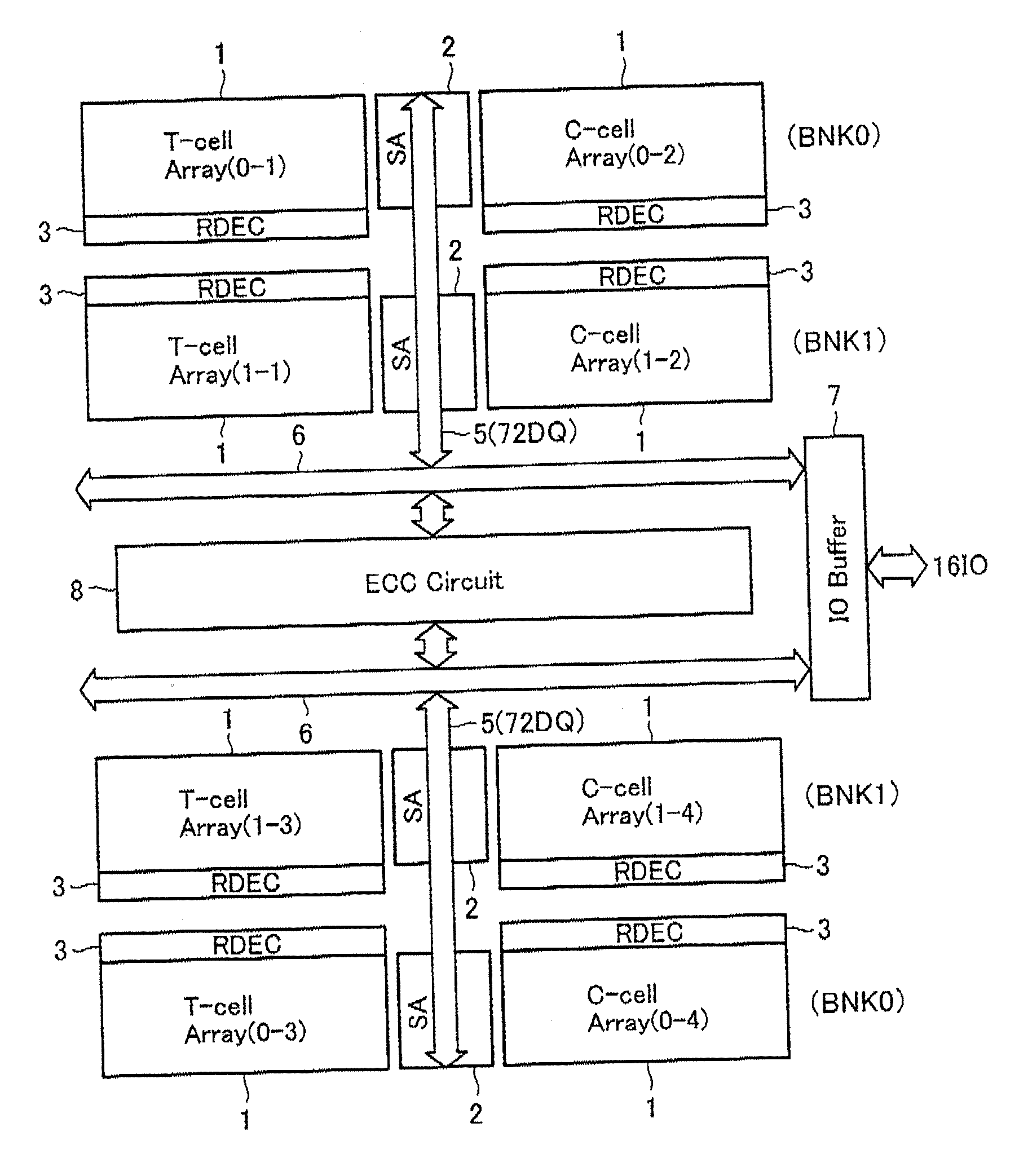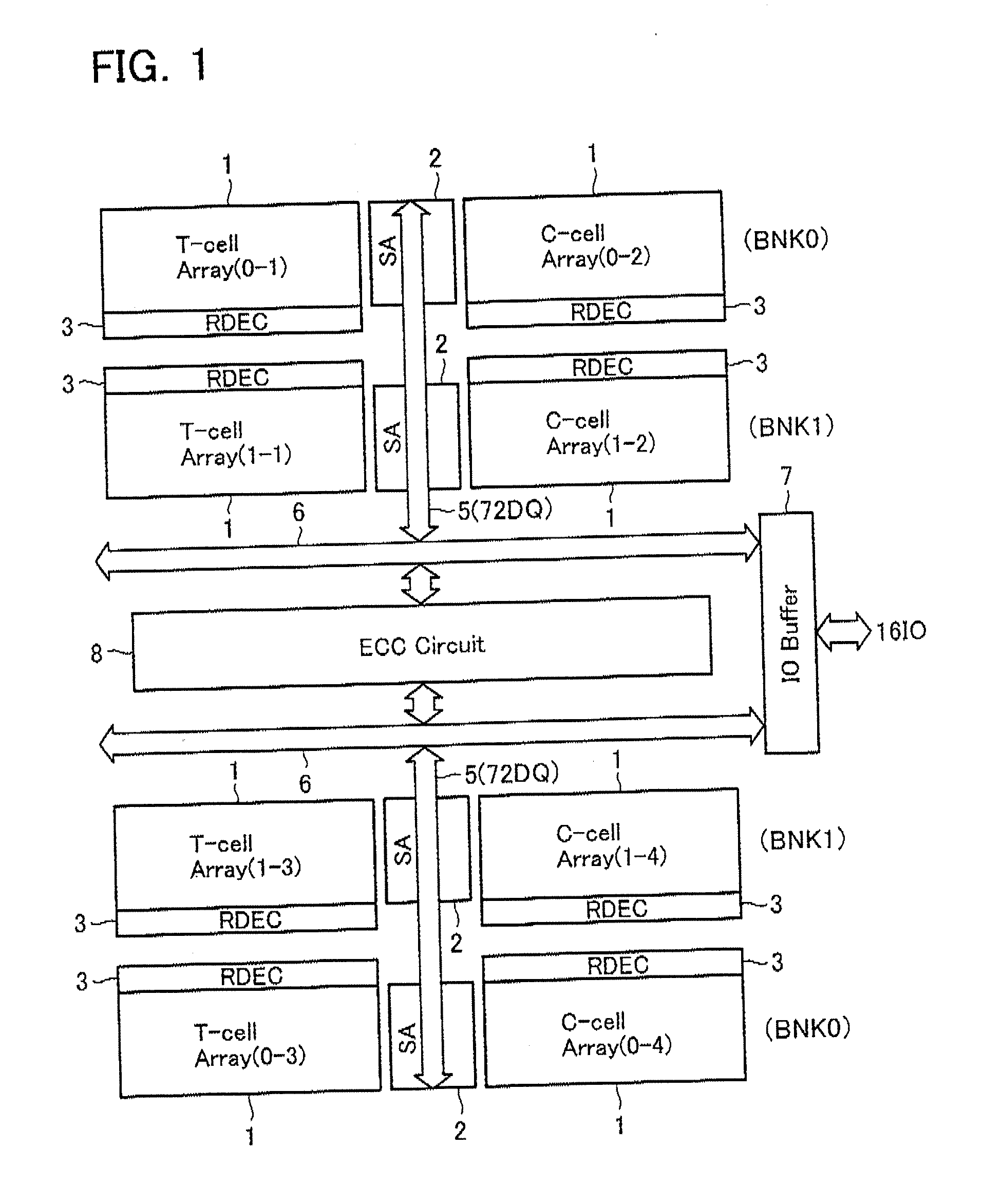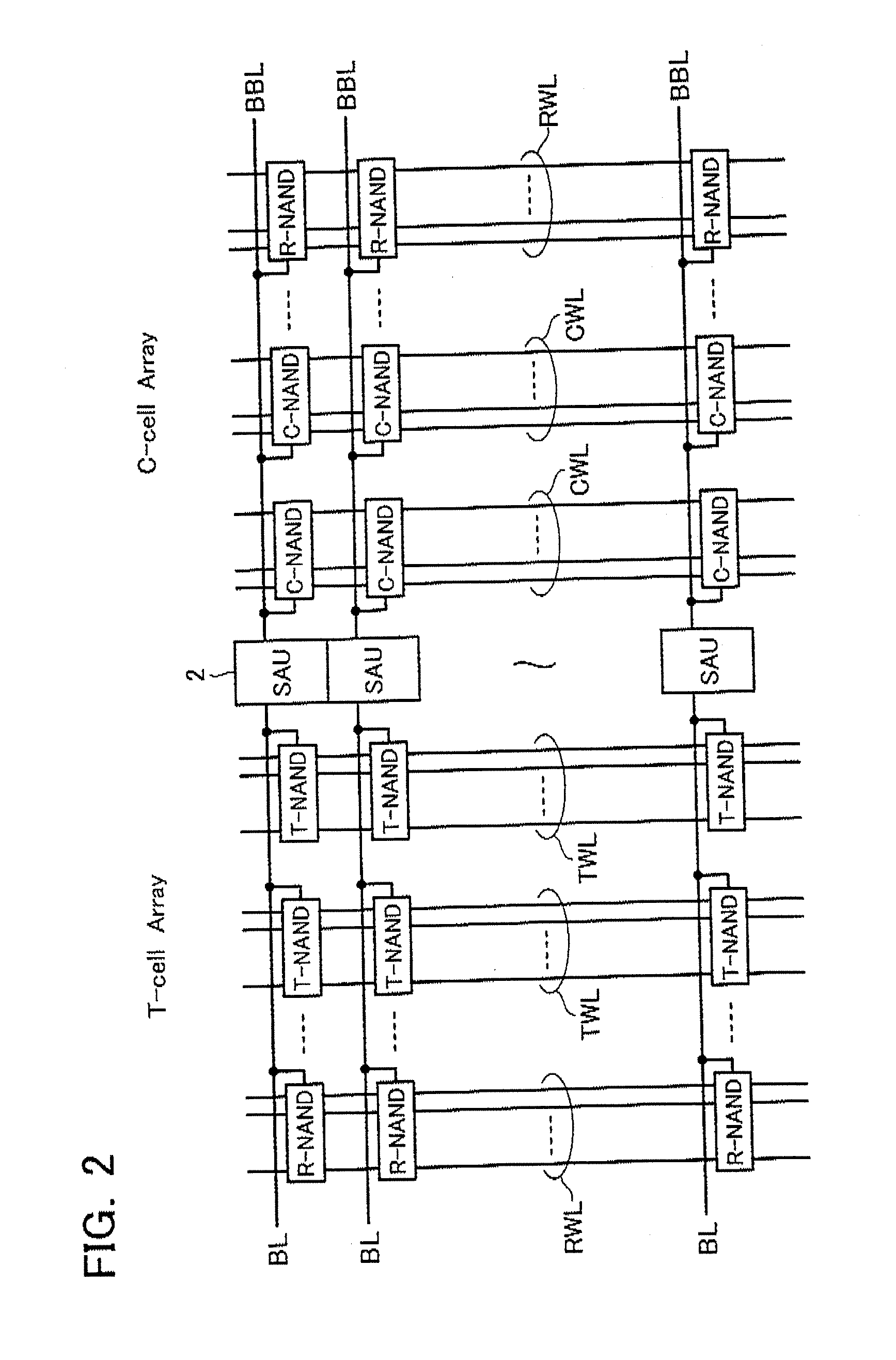Semiconductor memory device
a memory device and semiconductor technology, applied in the field of semiconductor memory devices, can solve the problems of increasing the error rate with an increase in the number of data rewrite operations, and increasing the workload of the host devi
- Summary
- Abstract
- Description
- Claims
- Application Information
AI Technical Summary
Benefits of technology
Problems solved by technology
Method used
Image
Examples
Embodiment Construction
[0048] Some embodiments of this invention will be described with reference to the accompanying figures of the drawing below.
[0049] Referring to FIG. 1, there is illustrated a block diagram showing main parts of a flash memory embodying the invention. This flash memory includes a couple of banks BNK0 and BNK1. Bank BNK0 is formed of four separate memory cell arrays 1—i.e., T-cell array (0-1), C-cell array (0-2), T-cell array (0-3), and C-cell array (0-4). The other bank BNK1 also is formed of four cell arrays 1, i.e., T-cell array (1-1), C-cell array (1-2), T-cell array (1-3), and C-cell array (1-4).
[0050] Each cell array 1 is associated with a row decoder (RDEC) 3 for performing word-line selection. Sense amplifier (SA) circuits 2 are provided, each of which is commonly owned or “shared” by neighboring T-cell array and C-cell array. These T-cell and C-cell arrays have a plurality of information cells, T-cells and C-cells, respectively, each having at least one reference cell R-cel...
PUM
 Login to View More
Login to View More Abstract
Description
Claims
Application Information
 Login to View More
Login to View More - R&D
- Intellectual Property
- Life Sciences
- Materials
- Tech Scout
- Unparalleled Data Quality
- Higher Quality Content
- 60% Fewer Hallucinations
Browse by: Latest US Patents, China's latest patents, Technical Efficacy Thesaurus, Application Domain, Technology Topic, Popular Technical Reports.
© 2025 PatSnap. All rights reserved.Legal|Privacy policy|Modern Slavery Act Transparency Statement|Sitemap|About US| Contact US: help@patsnap.com



